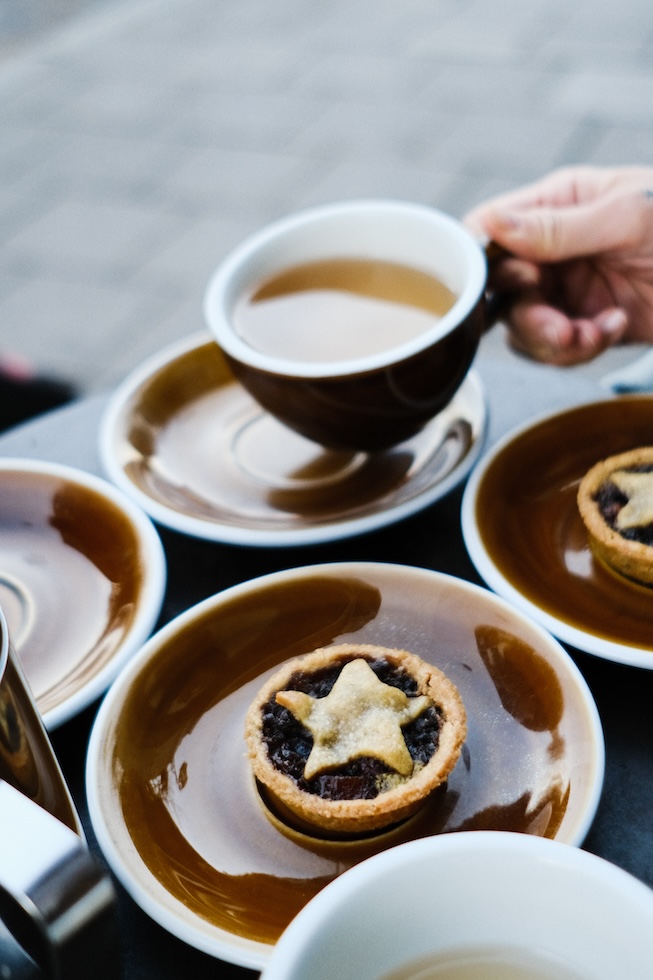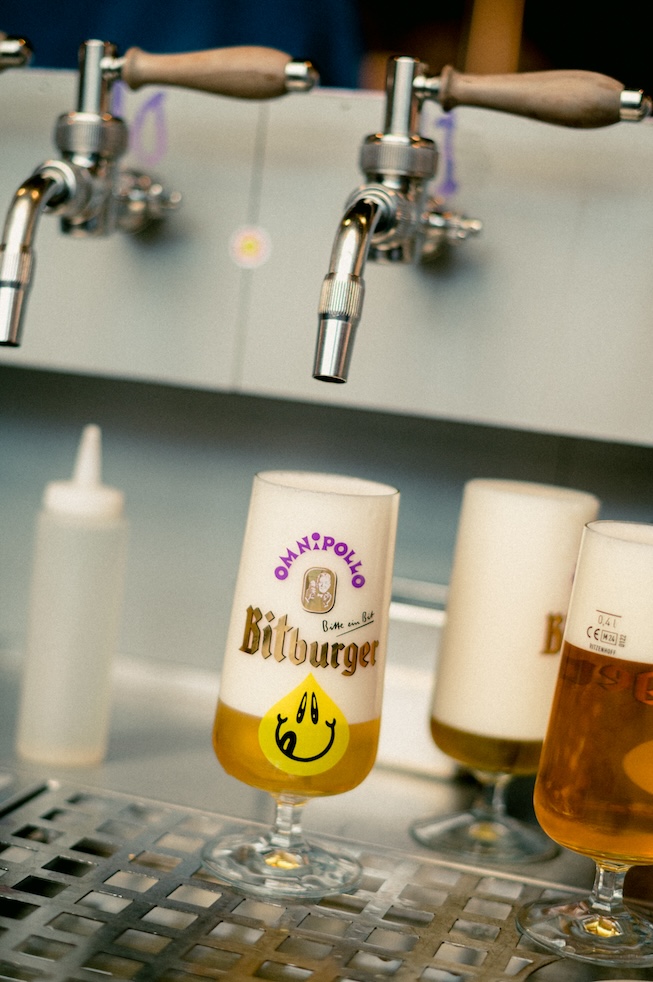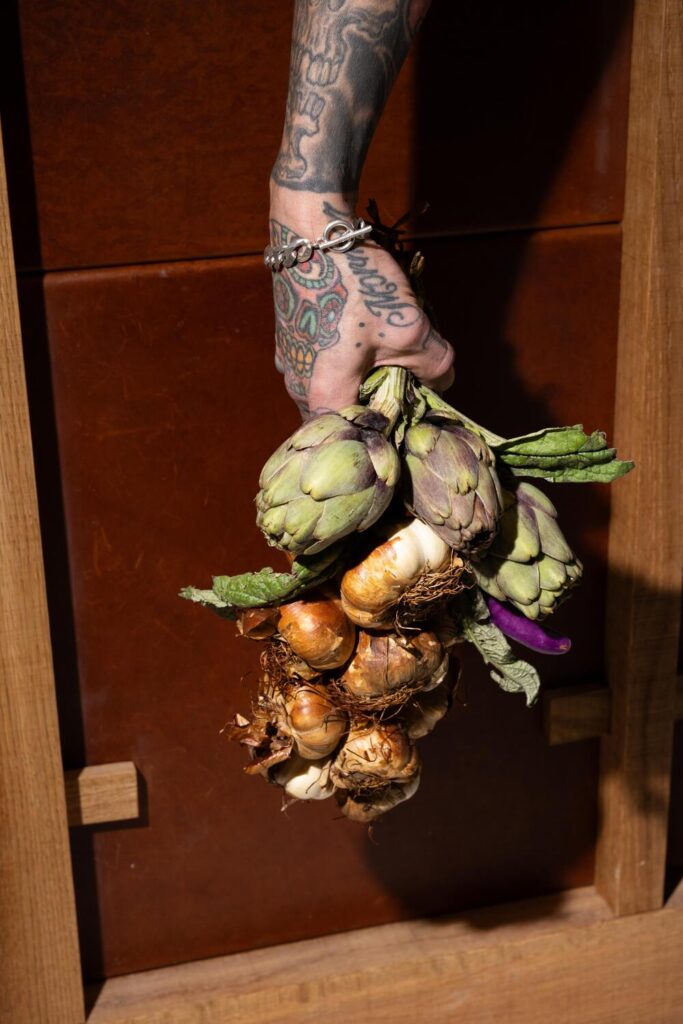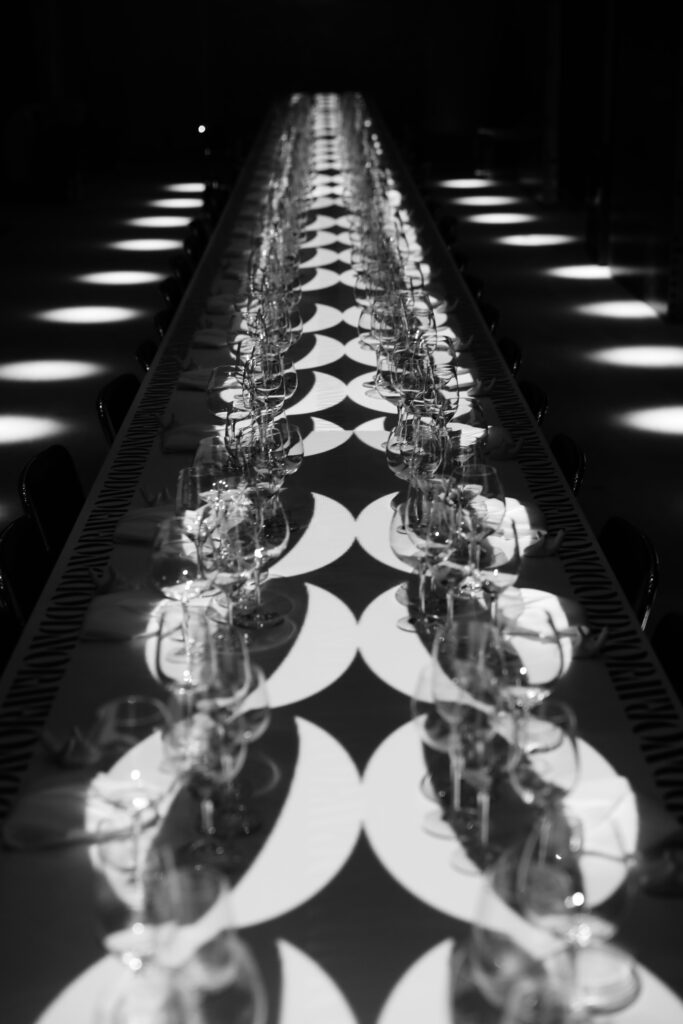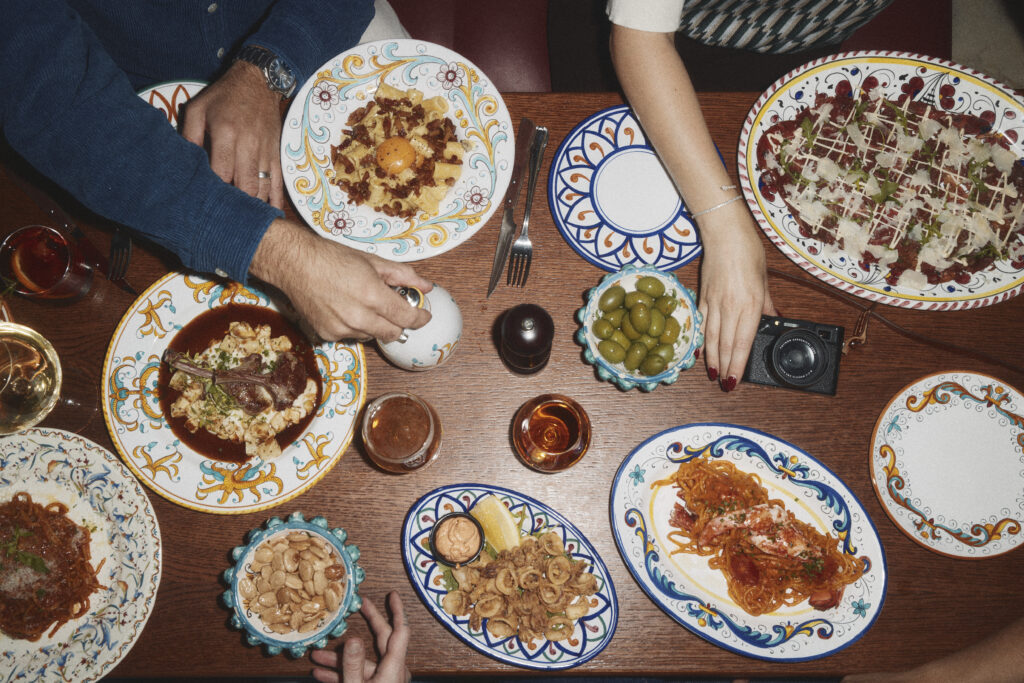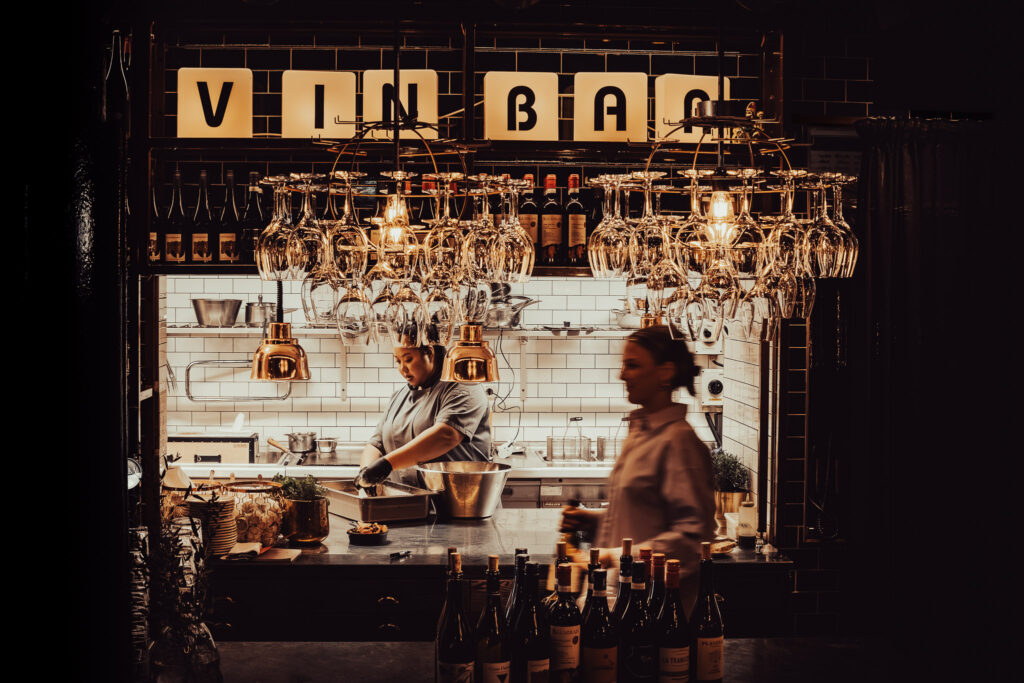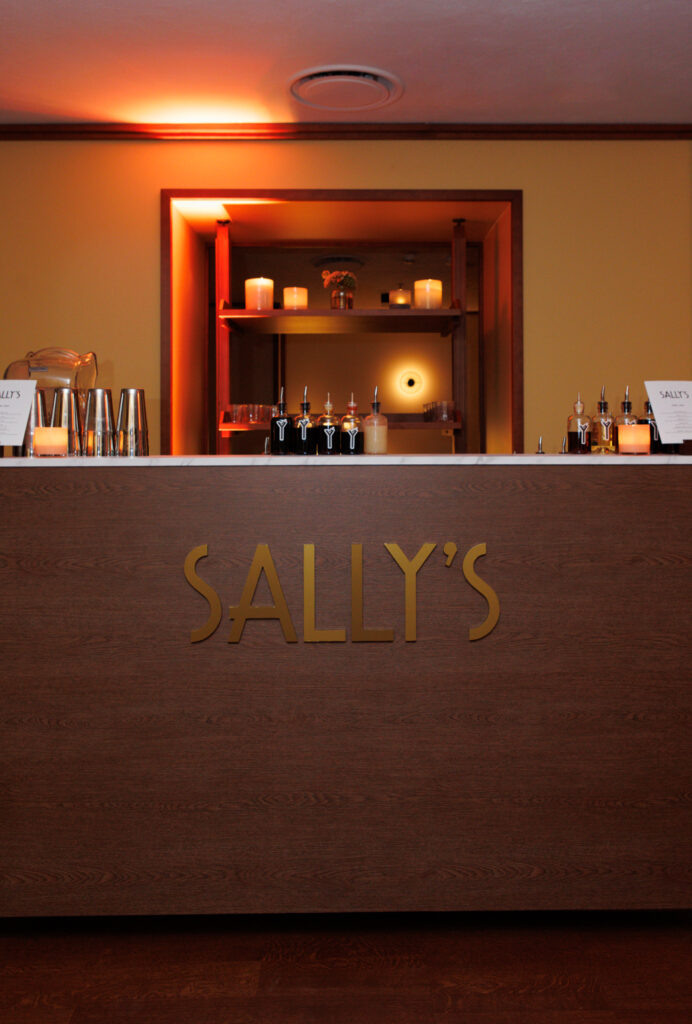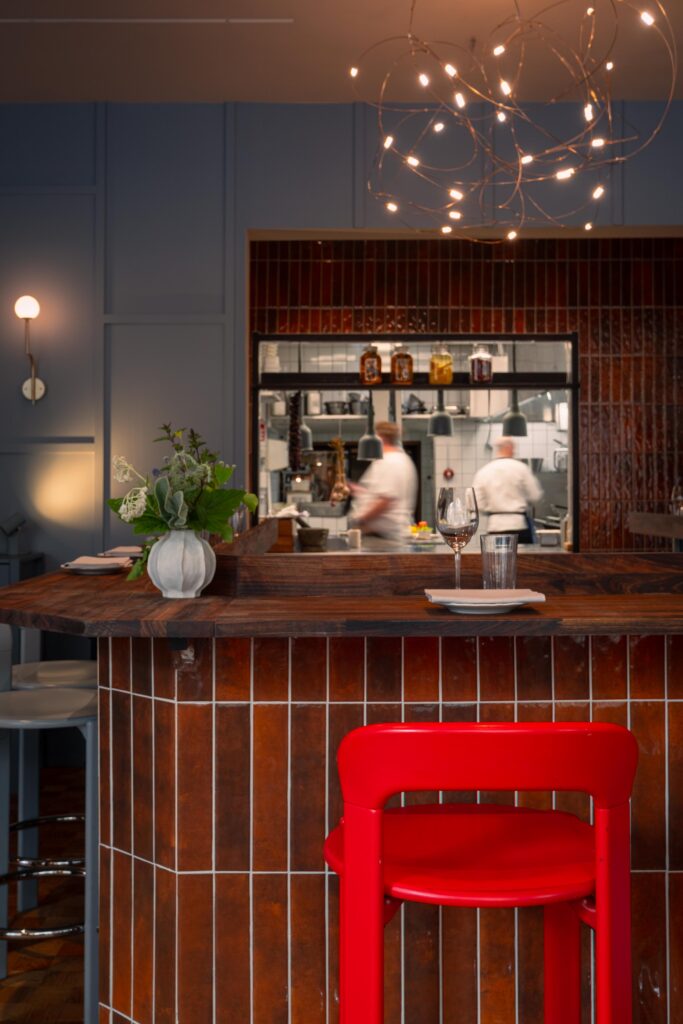A Night at Black Milk – Stockholm’s Most Theatrical Omakase text Jahwanna Berglund images courtesy of Black Milk There are meals, and then there are experiences. Black Milk Gastro Bar is unmistakably the latter. Tucked away in Stockholm, yet worlds apart from the polished sameness of the city’s fine dining scene, Black Milk doesn’t just serve food, they perform it. With the poetic tagline “taste lives in the beholder,” the evening unfolds like a play, where each act is a new flavor, each bite a story, and you, the guest, become part of the script. When you step into Black Milk, there’s no menu to choose from. Instead, you’re greeted by the råvaror, the ingredients of the night on display across the counter and wall. Like clues in a mystery, they offer glimpses into what’s to come: jet-black Peruvian mint, thick cuts of parrotfish, Ethiopian kale, Japanese chili, and curious jars filled with yuzu, coconut, and black Russian caviar. The room hums with quiet excitement. The scene is set. Omakase – A Trust Fall in Flavors Black Milk operates under the Omakase principle, a Japanese tradition that translates to “I leave it up to you.” Rather than ordering à la carte, guests entrust the chef with full creative control. It’s an invitation to surrender expectations and in return, receive something far more intimate and daring. This is not fusion. It’s something more instinctual, more emotionally driven. It’s global storytelling told through food by chefs and sommeliers who’ve wandered the world not just to collect flavors, but to understand them. At one point in the evening, I’m handed a plate with parrotfish gently cooked and paired with a dark chocolate mole, bold, rich, and surprisingly delicate. Ethiopian kale arrives next, buttery-soft and tinged with an unexpected garlic flavor and the fresh sourness of lemon. Later, a scoop of yuzu gelato topped with olive oil and black caviar shocks my palate awake: creamy, salty, cold, unexpected. I feel like I’m in Tokyo, Addis Ababa, and Lima all at once. And yet, it never feels forced. Every course is timed with cinematic pacing, each ingredient introduced like a new character. The sommeliers narrate as they pour natural wines, rare bottles, unexpected pairings and guide you through the story without ever overshadowing it. A Stage for the Senses Black Milk is not about indulgence. It’s about curiosity. It’s about chefs who are genuinely passionate and not about trends, but about flavor, people, and memories. In a city often defined by its minimalism, Black Milk dares to be maximalist in feeling. It’s not just a restaurant. It’s a mirror held up to your senses that asks you to feel more, taste more, and think less. And yes, while this experience is deeply personal, emotional, and guided by the senses, I’d be lying if I said I didn’t reach for my phone more than once. With the perfect lighting and presentation of each dish plated like a miniature set design on a theatre stage, the camera roll quickly filled with Instagram-friendly moments. Call it a modern standing ovation. If you’re tired of the predictable, if you’re craving something emotional and alive, step inside. At Black Milk, the play is always about to begin. blackmilkgastrobar.com

